The Lovely @dswigle and #marketfriday. SAFARI NURSERY SOUTH AFRICA!
Hey everyone, ever heard of Denise @dswigle and her amazing #marketfriday? If not where have you been? Head off over here pop in a submission and comment and give her some love: https://hive.blog/hive-196308/@dswigle/market-friday-breaks-her-fast#comments

As above, how do you like dem apples? I took a nice ride on my scooter to Safari Nursery about 10 kms from my house, I did a quick video here too of the amazing waterfall in the Nursery and surrounds check that out here: https://hive.blog/nature/@craigcryptoking/waterfall Happy face or not so much, I think he is rather cool, but weird :P
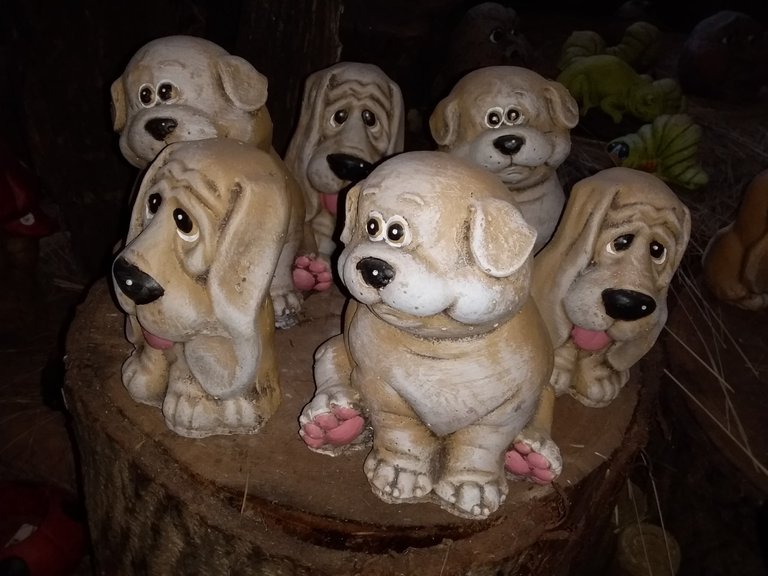
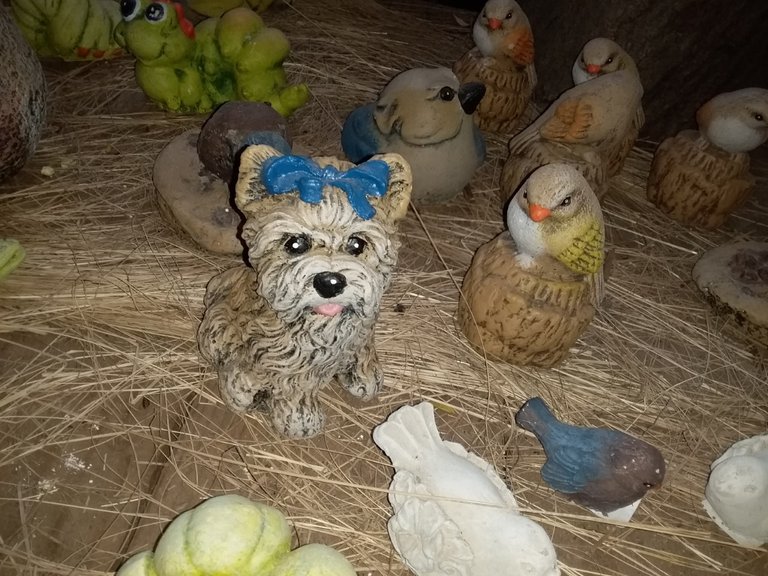
As one enters this amazing Nursery one is greeted with these interesting pottery creations! They cal themselves the 'Garden Centre Without Equal' and they truly are check their site here : https://www.safarigardencentre.com/index1280x1024.html

If ever there was a 'gumpost wooden superstucture' this was it, some MARVEL-ous carpentry here, Safari features many thatch rooves at one point some of the biggest in Africa, this however a clear roof hot house! One of the many featured at this enourmous Garden Centre, Gorgeous right?
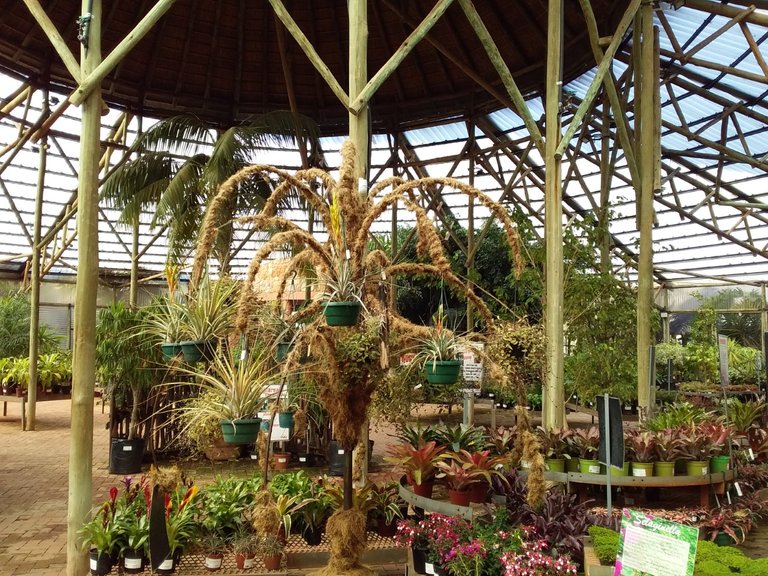
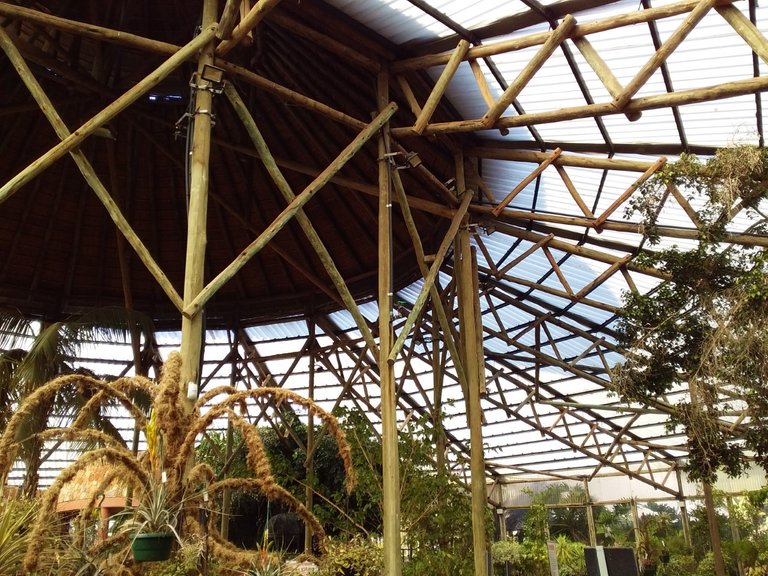

As Nurseries would go they have plants, many incredible and magnificent plants! From Cactuses and shrubs in hothouses, to flowers and Bonsai outdoors! A stunning restaurant and dams and waterfalls with swans, ducks and koi to boot with incredible views!
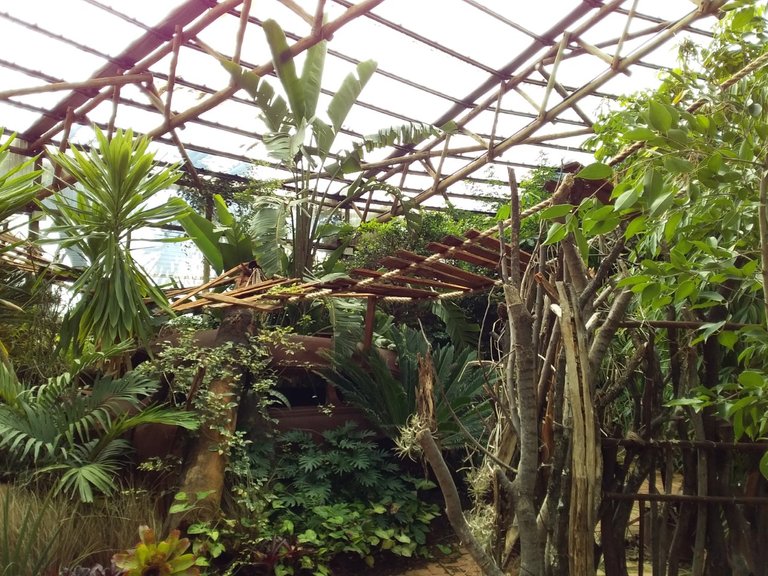

Cactus, at Safari outdoor Nursery there are many and they are spectacular, check out more here as per wikipedia.org A cactus (plural cacti, cactuses, or less commonly, cactus)[3] is a member of the plant family Cactaceae,[Note 1] a family comprising about 127 genera with some 1750 known species of the order Caryophyllales.[4] The word "cactus" derives, through Latin, from the Ancient Greek κάκτος, kaktos, a name originally used by Theophrastus for a spiny plant whose identity is now not certain.[5] Cacti occur in a wide range of shapes and sizes. Most cacti live in habitats subject to at least some drought. Many live in extremely dry environments, even being found in the Atacama Desert, one of the driest places on earth. Cacti show many adaptations to conserve water. Almost all cacti are succulents, meaning they have thickened, fleshy parts adapted to store water. Unlike many other succulents, the stem is the only part of most cacti where this vital process takes place. Most species of cacti have lost true leaves, retaining only spines, which are highly modified leaves. As well as defending against herbivores, spines help prevent water loss by reducing air flow close to the cactus and providing some shade. In the absence of leaves, enlarged stems carry out photosynthesis. Cacti are native to the Americas, ranging from Patagonia in the south to parts of western Canada in the north—except for Rhipsalis baccifera, which also grows in Africa and Sri Lanka.
Cactus spines are produced from specialized structures called areoles, a kind of highly reduced branch. Areoles are an identifying feature of cacti. As well as spines, areoles give rise to flowers, which are usually tubular and multipetaled. Many cacti have short growing seasons and long dormancies, and are able to react quickly to any rainfall, helped by an extensive but relatively shallow root system that quickly absorbs any water reaching the ground surface. Cactus stems are often ribbed or fluted, which allows them to expand and contract easily for quick water absorption after rain, followed by long drought periods. Like other succulent plants, most cacti employ a special mechanism called "crassulacean acid metabolism" (CAM) as part of photosynthesis. Transpiration, during which carbon dioxide enters the plant and water escapes, does not take place during the day at the same time as photosynthesis, but instead occurs at night. The plant stores the carbon dioxide it takes in as malic acid, retaining it until daylight returns, and only then using it in photosynthesis. Because transpiration takes place during the cooler, more humid night hours, water loss is significantly reduced.
Many smaller cacti have globe-shaped stems, combining the highest possible volume for water storage, with the lowest possible surface area for water loss from transpiration. The tallest[Note 2] free-standing cactus is Pachycereus pringlei, with a maximum recorded height of 19.2 m (63 ft),[6] and the smallest is Blossfeldia liliputiana, only about 1 cm (0.4 in) in diameter at maturity.[7] A fully grown saguaro (Carnegiea gigantea) is said to be able to absorb as much as 200 U.S. gallons (760 l; 170 imp gal) of water during a rainstorm.[8] A few species differ significantly in appearance from most of the family. At least superficially, plants of the genus Pereskia resemble other trees and shrubs growing around them. They have persistent leaves, and when older, bark-covered stems. Their areoles identify them as cacti, and in spite of their appearance, they, too, have many adaptations for water conservation. Pereskia is considered close to the ancestral species from which all cacti evolved. In tropical regions, other cacti grow as forest climbers and epiphytes (plants that grow on trees). Their stems are typically flattened, almost leaf-like in appearance, with fewer or even no spines, such as the well-known Christmas cactus or Thanksgiving cactus (in the genus Schlumbergera).
https://en.wikipedia.org/wiki/Cactus
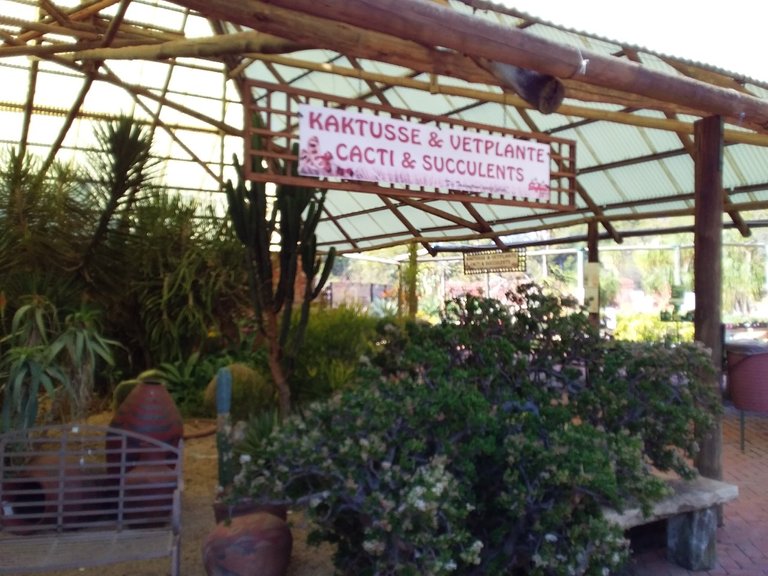
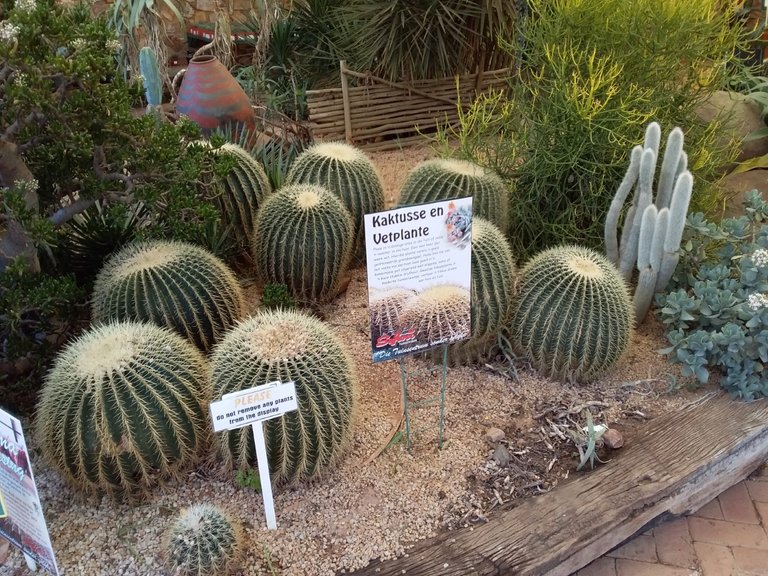
This gorgeous blue/yellow Macaw below, is a permanent resident, his name is George and is rather friendly indeed, just not sure it would be too wise to get too close I don't really feel the need to be losing a finger at this stage!
Some great info here on this species as per wikipedia.org
Biology
Of the many different Psittacidae (true parrots) genera, six are classified as macaws: Ara, Anodorhynchus, Cyanopsitta, Primolius, Orthopsittaca, and Diopsittaca. Previously, the members of the genus Primolius were placed in Propyrrhura, but the former is correct in accordance with ICZN rules.[2] Macaws are native to Central America and North America (only Mexico), South America, and formerly the Caribbean. Most species are associated with forests, especially rainforests, but others prefer woodland or savannah-like habitats.[3]
Proportionately larger beaks, long tails, and relatively bare, light-coloured, medial (facial patch) areas distinguish macaws from other parrots. Sometimes the facial patch is smaller in some species and limited to a yellow patch around the eyes and a second patch near the base of the beak in the members of the genus Anodorhynchus. A macaw's facial feather pattern is as unique as a fingerprint.[4]
The largest macaws are the hyacinth, Buffon's (great green) and green-winged macaws. While still relatively large parrots, mini-macaws of the genera Cyanopsitta, Orthopsittaca and Primolius are significantly smaller than the members of Anodorhynchus and Ara. The smallest member of the family, the red-shouldered macaw, is no larger than some parakeets of the genus Aratinga.[3]
Macaws, like other parrots, toucans and woodpeckers, are zygodactyl, having their first and fourth toes pointing backward.[
https://en.wikipedia.org/wiki/Macawm
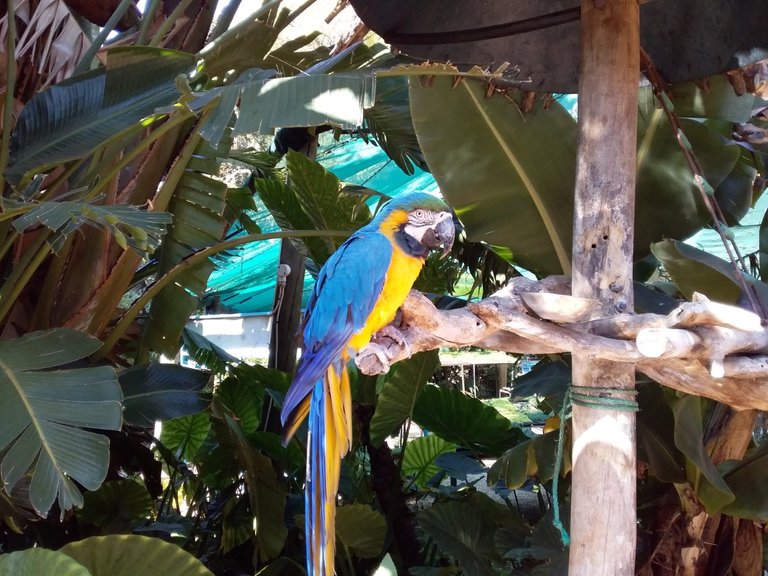
And to end it all off this 'Creepy' Number, PS: Never start a sentence with AND :P
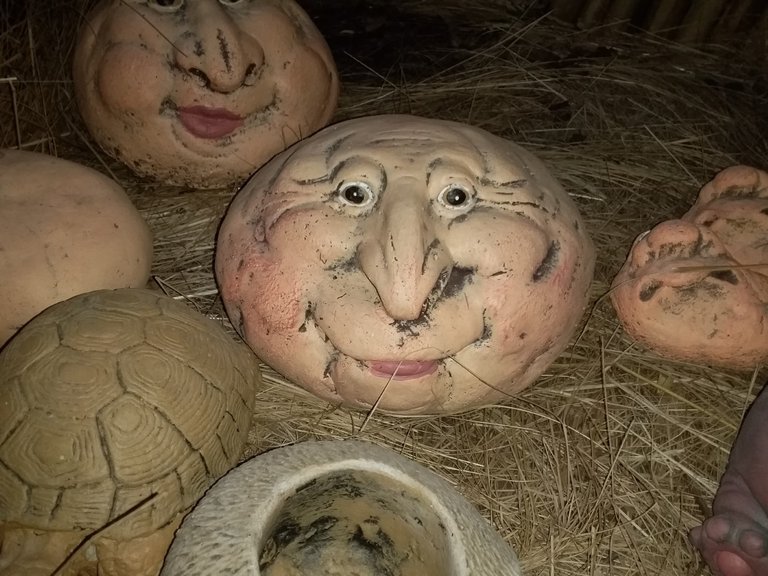
Be blessed, have an incredible weekend, Love and Light.
Cheer$;)
Nurseries are always interesting places to visit with home made art on display for gardens.
Informative detail on cacti, succulents are another always plentiful on offer, worth planting with our water scarcity here in South Africa.
True that Joan, have you been to Safari?? Cheerr$;0
No never been to this nursery, we have the Illovo nursery close to hand also relatively big and well known here on the South Coast. Also has the couple of macaw parrots at the nursery that have been resident for twenty odd years.
Natal??? I went to Port Shepstone High in Std 7 actually know the area well :)
Enjoying the good months now just a pity we are not allowed to go to the beach...
Yup good old Natal, moved from Transvaal in 1980 down here, never looked back..., well till recently the road outside has become very busy with traffic LOL, have a great weekend!